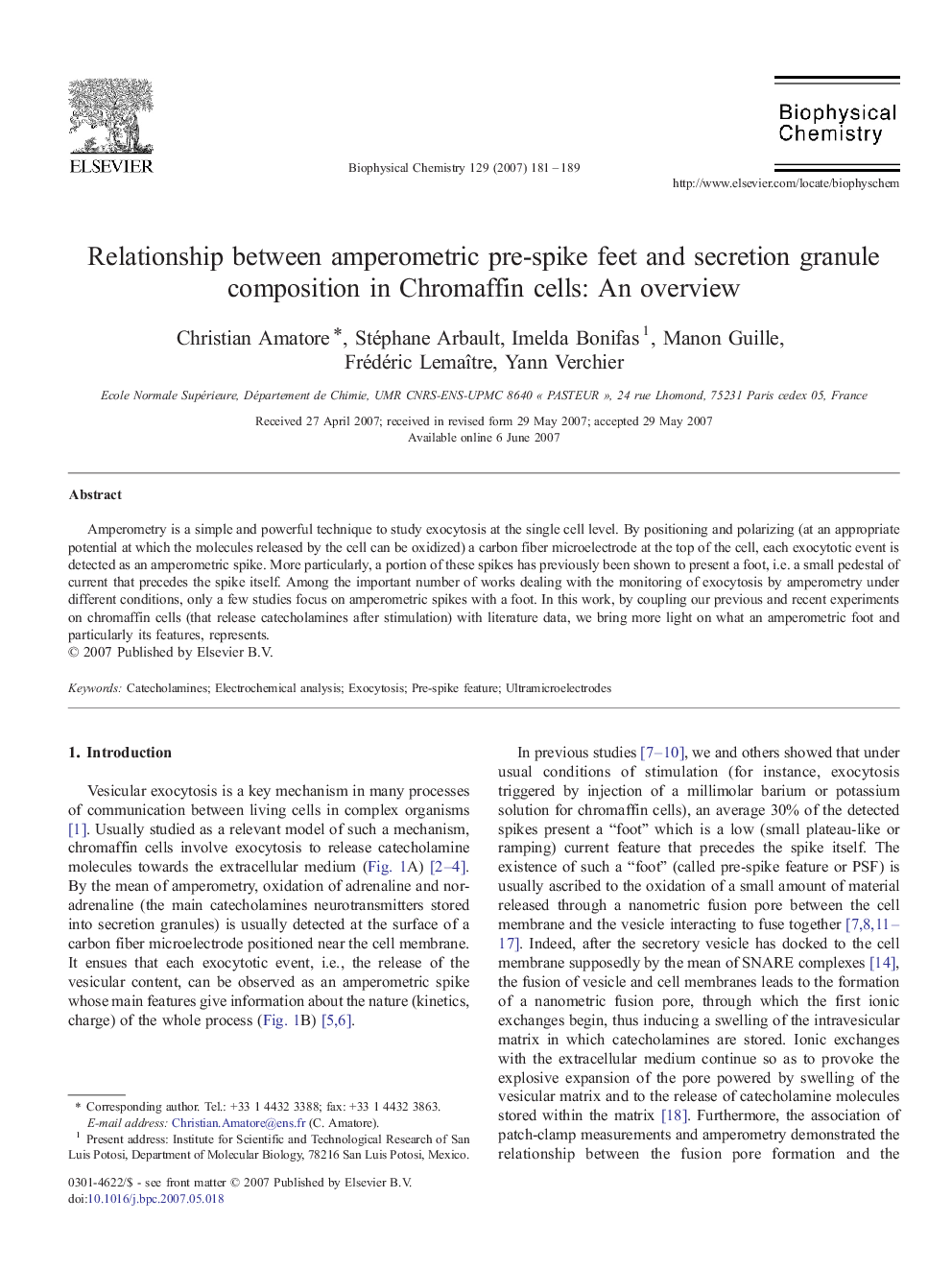| Article ID | Journal | Published Year | Pages | File Type |
|---|---|---|---|---|
| 5372114 | Biophysical Chemistry | 2007 | 9 Pages |
Amperometry is a simple and powerful technique to study exocytosis at the single cell level. By positioning and polarizing (at an appropriate potential at which the molecules released by the cell can be oxidized) a carbon fiber microelectrode at the top of the cell, each exocytotic event is detected as an amperometric spike. More particularly, a portion of these spikes has previously been shown to present a foot, i.e. a small pedestal of current that precedes the spike itself. Among the important number of works dealing with the monitoring of exocytosis by amperometry under different conditions, only a few studies focus on amperometric spikes with a foot. In this work, by coupling our previous and recent experiments on chromaffin cells (that release catecholamines after stimulation) with literature data, we bring more light on what an amperometric foot and particularly its features, represents.
